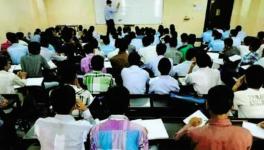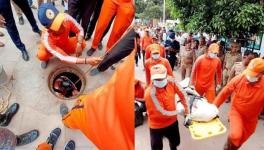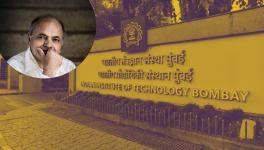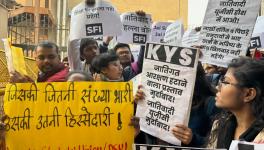Savitribai: The Legacy of a Much Loved Teacher
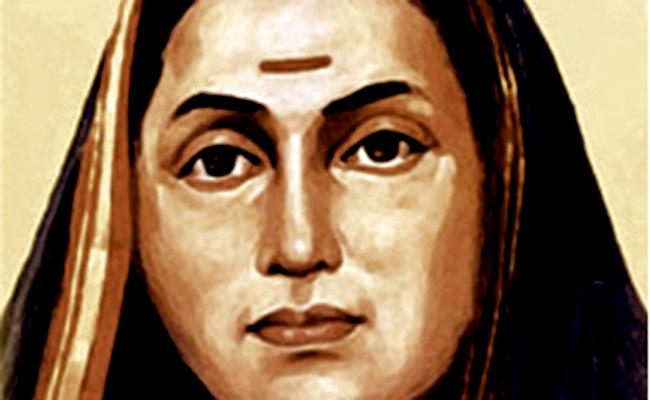
Global Warming and climate change are true. But, along with water bodies, it seems like people’s conscience is also drying up. It is not only the rivers that are polluted with poisonous wastes disposed by the industries, even people’s mind seems to have been contaminated with poisonous thoughts. Controlling children, women, and disabled has become a symbol of resistance in many places around the world. The modern education, which strove to make a person rational, has given a way to increased superstition.
This development is accompanied by intolerance, and an increase in caste-religious differences. Everyone seems to be caught up in linguistic, regional, and caste differences; it seems as though no longer can one see another human being simply as a human being. Most of the people in the country are aware of the problems in social institutions, education system, caste system; but not everyone is trying to bring about a change. Let us see human being as a human being; let us question everything before agreeing to everything. It is only good education, which teaches a child to learn to appreciate and respect the diversity in our country, that can ensure a brighter future.
Children are like empty canvases. Primary education cannot be seen as just another career option. Especially in the present context, teaching is a great responsibility.
There are enough schools; and there are enough learned teachers; especially after the Right to Education Act was passed, opening schools in remote villages is no longer difficult. In fact, in cities, owning educational institutions has become an industry in itself. Children are encouraged to prove themselves by ‘performing well’ in school. This is is made evident in the advertisements of schools that one sees after the results are announced. The advertisements carry pictures of the “high achieving” students.
80% of primary school teachers, and 65-70% of teachers in high school and colleges, are women. But how many among them are fit to be, or want to be, role models for children. How many of the educated are ready to speak against restrictive and parochial social norms in order to educate those who need empowerment. Despite all the obstacles, Savitribai Phule did not stop her fight to educate girls. It is not that Savitribai was the only woman teacher during her times. There were many, but all of them were from christian missionaries, and aimed at proliferating the teachings of Christ. Savitribai, on the other hand, rejected religion, heaven and hell, and thought children with great passion. She was not only a great teacher but also a much loved maternal figure to the girls.
We are in dire need of such figures.
Education for Awareness
One and a half centuries ago..
India was still in shackles. People like Gandhi and Ambedkar were not born yet. The ruling class was unstable and society had forgotten about being self critical. There were a few social reformers, mostly from Bengal and and the northern part of the country, who had acquired English education; they had begun to talk about the inequality in the social and cultural structures of the Indian society. They were vocal in their protest against social ills like child marriage and sati.
There were certain castes which had a monopoly over education, who kept it from others. One could not even think of talking about educating women. It was said, “If a woman learns to write, she will start writing letters to everyone. Her husband would die of starvation and serious illness.” A girl child, even before she gained any awareness of the outside world, would be married off to somebody. Even before the innocence of her childhood had disappeared, she would be someone's wife, daughter-in-law, and, finally, a mother. Her entire life was supposed to revolve around her family. A family’s well being was seen as a mark of a woman’s character. Women were reduced to doing things that neither had a beginning nor an end. They were just expected to bear children and take care of them.
In totality, school was vague concept that would find no space in the dreams of Dalit-shudra women. It was in these times that Savitribai was born, in 1831, in a village in Maharashtra. She was married off at the age of nine. But her groom was no ordinary boy. He had learnt English and was extremely critical of the prevailing social ills. He was the social reformer Jyotiba. Savitri had never gotten formal education. Jyotiba was her first teacher. When Jyotiba had started a school for the children from untouchable and downtrodden communities, he also realised that there was a need to educate women; it was then that he felt the need of a woman teacher for the girls. This is when Jyotiba sent Savitri to a formal school in Ahamed Nagar to receive a formal teachers’ training. A woman called Fhatima Sheik also received formal training along with Savitribai, Sheik went on to work in the school started by Savitri.
The first school for girls in Pune was started with nine students in 1849, when Savitribai returned after getting a formal education. Sadashiv Govande from Ahmad Nagar provided the school with free books. The school struggled to function properly as it was very difficult to find someone who was ready to provide them with a space to hold the classes. A second school was started in 1851. Mahila Sewa Mandal was established in 1852. Savitribai was religious and spiritual, and she took her work very seriously. The stones, mud, and cow dung that were thrown at her, while she was on her way to teach in the school, did not stop her from teaching.
The Phule couple were seen opening school after school. The orthodox members of the society accused them of betraying the religion and causing harm to it by teaching those who were not supposed to be taught. They also received threats. Jyotiba’s father succumbed to all the pressures, eventually asking the couple to move out of his house. But even this did not dishearten the young couple. They moved into a new house. Savitribai’s elder brother would also argue with her, raising questioning regarding her motivations behind teaching the untouchable. The Phule couple answering the similar questions, raised by members of the extended family and well wishers, by continuing their work undeterred.
How the people—who received education in a particular system—turn out to be is an indicator of the quality of education that that system is providing. Some of the girls who studied in Puhle’s school went on to become well known writers. The first feminist writer, Tarabai Shinde, was also one of their students. Tarabai’s Stri Purusha Tulana is considered to be a classic text of Indian feminist thought. The essays of another student of the Phule couple, Muktabai, also tells us the kind of education that the Phules envisioned for the society.
Satyashodhak
The Phule couple recognised caste system as the primary reason behind all the social ills that existed in Indian society. They saw English as a powerful tool in the fight against caste oppression. Anything spoken against caste system sounded like an attack on Brahmins. This is true even today. It is necessary for everyone of us to kill the deep rooted brahminism in us. Considering social norms of caste as supreme or/and idealising a certain lifestyle with the sense of superiority, this is brahminism. It is not only brahmins who are seen to be an embodiment of brahminism, but also non-brahmins who aspire to achieve that status.
So, what does it mean to have a caste-free society in India? What does fighting the caste mean? Caste-free society is also a society where gender-based discrimination doesn’t exist. Which means, movements fighting caste should work hand in hand with the feminist struggle.
The Phule couple understood the nuances of all the issues tied up with caste in India. Their reformist agenda was to provide education and, through that, awareness of the oppressed castes; along with this, they also worked towards fighting the problems faced by women from different caste, including brahmin widows. The Peshwa rule in Maharashtra had contributed in solidifying the “pollution” rules against brahmin widows. A widow was expected to not look ‘beautiful’; those who were, were shunned; they were expected to behave like the living dead. They had no say in anything. This imposed docility that made it easy for men to exploit them. Some of the widows also bore illegitimate children from such extra marital affairs. Many of them committed suicide because of the shame. Savitribai attempted to end such an inhuman practise in a unique way. In 1860, she organised all the barbers and made them pledge that they would not tonsure any widow.
Untouchability was also rampant. People who belonged to lower castes did not have access drinking water. The Phule couple built a water resource in 1868 which provided drinking water to anyone who was denied access to public water sources. They also established the Satyashodhak Samaj, aiming to spread awareness about the oppression that the caste system caused. SatyaShodhak’s primary aim was to encourage people to question the legitimacy of the caste system and understand why it was a hierarchical system, and how it oppressed those belonging to certain castes. The core value was, “We are all children of god. We do not require middlemen to worship god.” This was a direct attack on the hegemony of the brahmins. In the same year, they also celebrated a wedding ceremony without a brahmin for the first time. In 1874, they adopted Yashwanth, the biological son of a brahmin widow, Kashibai. Yashwanth grew up to become a doctor.
There was no end to their work. Even the fact that the powerful people around them were their enemies did not stop them from continuing their work. During the droughts, they actively participated in serving in the camps, and also set up schools in these camps. It was Savitribai who performed the last rites of Jyotiba. She took up the responsibility of running the Satyashodhak Samaj and continued the work that they had started. In 1897, she served the plague infected patients relentlessly, before succumbing to the disease herself.
For Savitribai, her marriage did not become a boundary, a restrictive relationship. It is hard to write about one of them without mentioning the other’s works; that is how close and integral they were in each other’s work. In this context, we may call them an ideal couple.
Directions…
More than a quarter of the population of India is illiterate. Even those who are literate are not well fed. Schools are becoming places that introduce children to casteism. There is politicisation of history, books that are being read by children. English, the imperial language, has overshadowed all the “vernacular” languages. A scholar with no knowledge of English is considered an illiterate. Money has increasingly become important in a society where market is the new religion. Advancement in technology is turning humans into slaves to it. All of this is contributing in making it difficult to organise people into political groups.
When a child refuses to eat food cooked by a dalit, it is the responsibility of the school to explain why such casteism is wrong. A school should be a space where a child learns that caste discrimination has to be fought and not nurtured.
The superstitions and pollution around birth, menstruation, death, and astrology—part of our everyday practices—should be questioned. There is no need to wait for a law to be made. One has to stop waiting for change and ask, “What difference can I make?” This applies to teachers as well.
We have Savitribai and Jyotirao Phule’s rich legacy to take inspiration from; we should carry it forward to future generations too. For a child, school should be a space where they learn the importance of equality.
Get the latest reports & analysis with people's perspective on Protests, movements & deep analytical videos, discussions of the current affairs in your Telegram app. Subscribe to NewsClick's Telegram channel & get Real-Time updates on stories, as they get published on our website.









